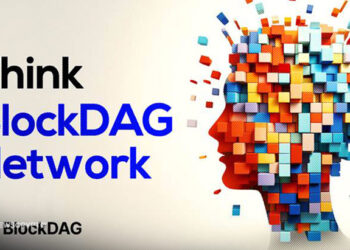Fidelity Digital Assets, a division of the global financial powerhouse Fidelity Investments, has published an insightful paper titled “2025 Look Ahead: Is it ‘too late’ to enter digital assets?” This comprehensive publication examines the ongoing rivalry between Ethereum and Solana, offering valuable insights for investors as they approach 2025. The section “Ethereum Outlook,” penned by Max Wadington, provides an in-depth analysis of key metrics, anticipated network advancements, and their broader implications for investors.
Solana vs. Ethereum: Future Prospects in 2025
In a compelling segment comparing Solana and Ethereum, Wadington emphasizes the importance of fundamentals for long-term investors. He notes, “Ethereum showcases robust developer activity, a substantial total value locked (TVL), and a stablecoin supply. In contrast, Solana’s revenue and TVL are advancing at an impressive pace, capturing notable community attention over the past year.”
A challenge facing Solana’s growth is the origin of its revenue, significantly driven by memecoin trading. Wadington points out that while “a similar argument could be made for Ethereum’s reliance on Uniswap,” Ethereum’s fundamentals “are slightly less dependent on speculation and may exhibit less volatility in the long term.” Both platforms carry inherent risks, yet Ethereum’s broader utility could provide it with greater resilience during bear markets.
Short-Term Drivers and Technical Milestones
Despite these dynamics, short-term narratives and technical advancements could sway market sentiment towards Solana in 2025. Solana’s forthcoming Firedancer upgrade promises to substantially boost transactions per second (TPS), enhancing Solana’s competitive edge. In contrast, Ethereum’s Prague/Electra upgrade is forecasted to generate less community excitement, lacking a significant impact on Ether’s value proposition.
An additional differentiator is Ethereum’s involvement in U.S.-based spot exchange-traded funds (ETFs), which provides an accessible channel that fuels both institutional and retail demand. However, Wadington cautions that this advantage “could disappear under potential regulatory shifts,” which might either reinforce Ether’s lead or altogether eliminate it.
The Return to Fundamentals
Ultimately, Wadington suggests that as the market evolves, fundamentals may regain prominence over short-term hype: “Although Solana seems to possess more short-term momentum than Ether, its relative performance could offer significant upside for Ether, akin to how Solana’s prior underperformance paved a substantial path leading into 2024. As prices escalate throughout this bull market, investors are likely to increasingly prioritize fundamentals, potentially steering them back towards Ether.”
Evaluating Ethereum’s Strategic Moves
Focusing on Ethereum, the paper explores ongoing discussions surrounding Ethereum’s rollup-centric roadmap. According to Wadington, “The rollup-centric roadmap was crafted to scale Ethereum while maintaining an easily manageable Layer 1 blockchain. However, since the Deneb-Cancun upgrade, this decision has sparked debates as Layer 1 fees have sharply declined.”
While reduced fees may appear unfavorable for direct revenue to Ether holders, Fidelity asserts that the long-term advantages outweigh the short-term revenue decline. Wadington reiterates, “We remain confident that revenue from the blob market is unlikely to offset the dramatic reduction in revenue from the previous upgrade in the short term, yet it still presents long-term benefits through enhanced network effects.”
In this perspective, Ethereum’s ecosystem stands to gain from a symbiotic relationship with Layer 2 solutions, which leverage Ethereum’s security and liquidity. The priority for the foundation, as Wadington articulates, is ensuring “near-zero fees to retain Layer 2s within the Ethereum ecosystem.” This could foster the emergence of more specialized Layer 2 projects in 2025, allowing developers to tailor entire tech stacks for niche applications such as the Ethereum Name Service (ENS).










